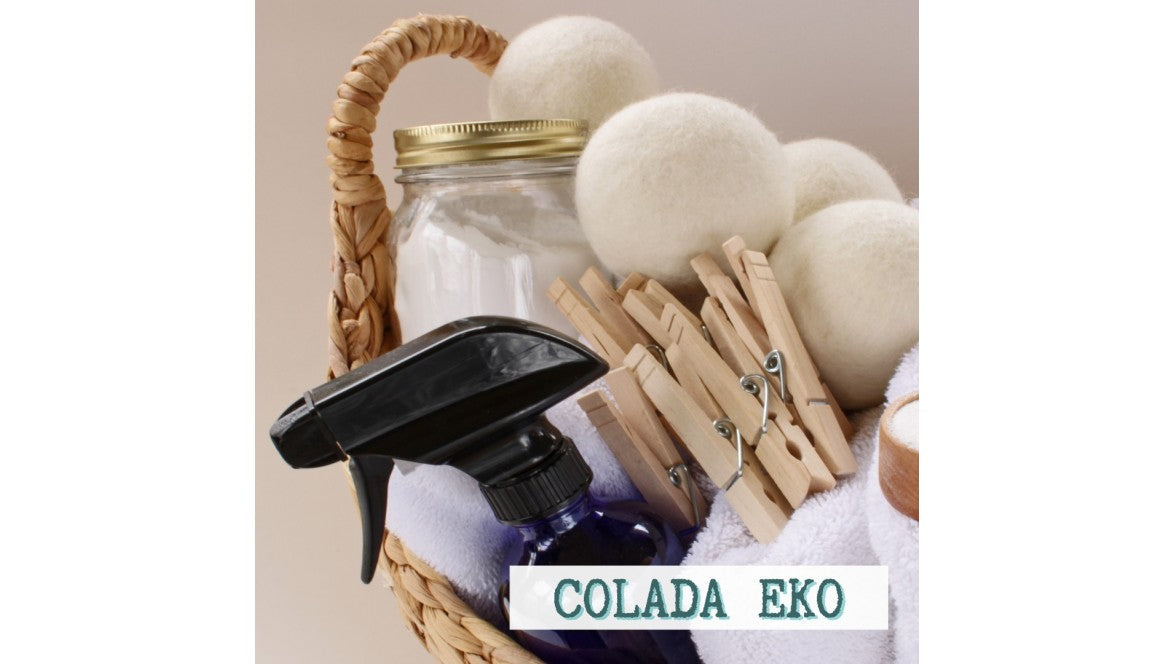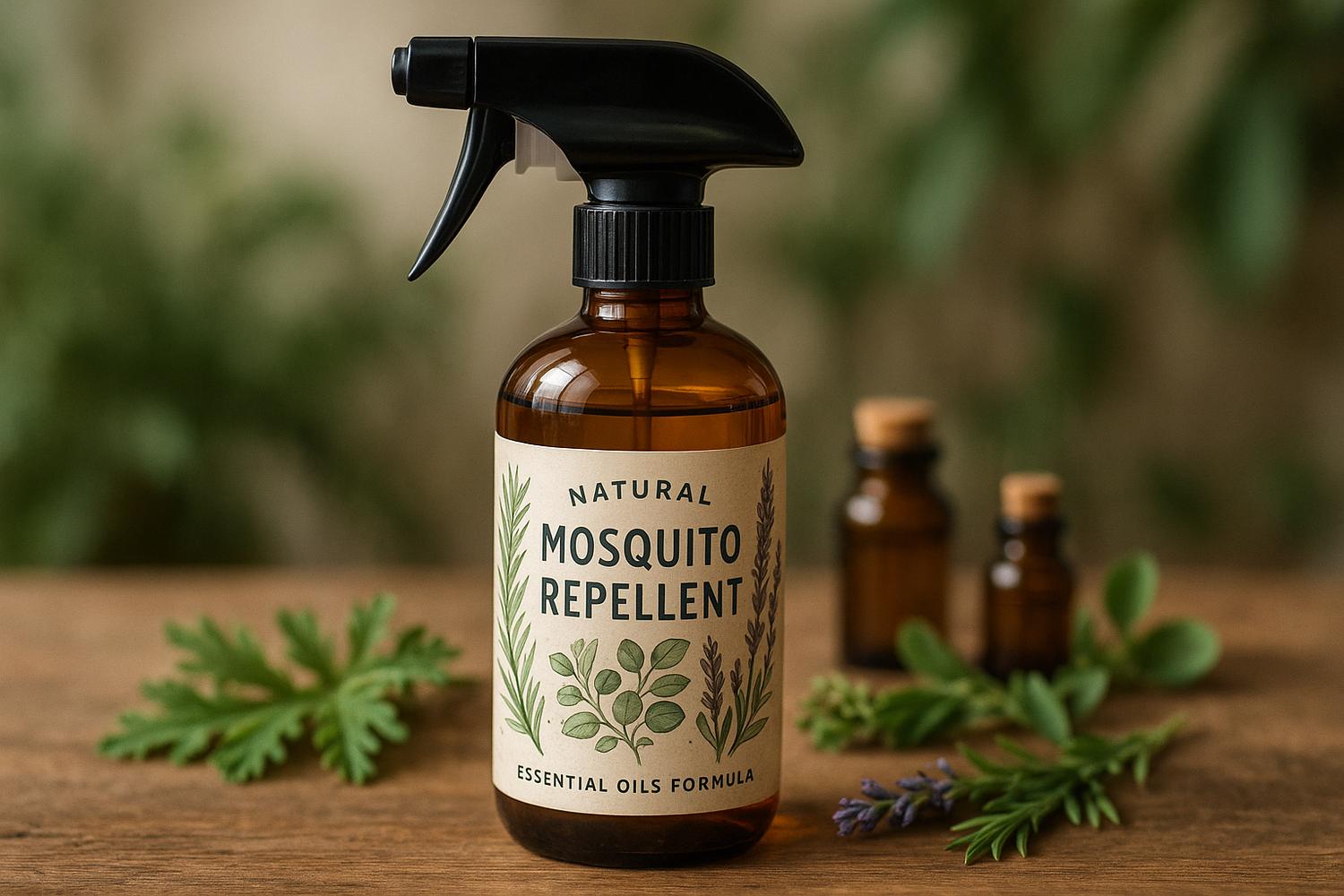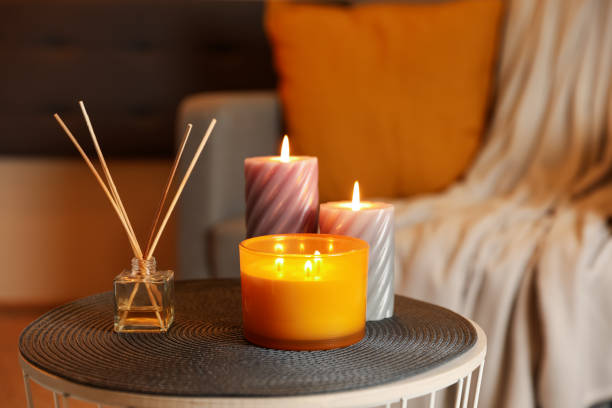How many loads of laundry do you do each year? Have you ever stopped to think about it? In our case, with two adults and a dog, we load at least two loads of laundry per week. That means we load at least 104 loads of laundry per year . That's already a load of laundry... Since it's such a frequent and everyday activity, it's worth stopping to think about the impact it has on the environment and how to make it as environmentally friendly as possible.
That's what we propose in this post. We want it to serve as a guide to help you identify the steps you need to take to achieve eco-friendly laundry . We're not only going to talk about the products to use, but also how to make your clothes last longer, thus consuming fewer of the planet's resources. We're going to focus not only on how to wash, but also on pre-treating stains, drying clothes, ironing them, and storing them.
PRETREAT
Of course, pretreating tough stains is much more sustainable than having to wash a garment twice. The less we wash clothes, the less they deteriorate and the longer they last. So if you see a stain you think won't come out, try one of these tricks:

- Solid textile soap: El Zorro d'Avi's handmade soap is specially designed for this. And you can also use the Marseille soap . Simply rub the moistened bar on the stain and place the garment in the washing machine. This is my favorite quick option, as it doesn't require a soak. However, it's not entirely effective on more stubborn stains.
- Liquid soap : You can do the same trick above with liquid laundry soap. And, if you use a mild soap, like homemade liquid Marseille soap (whose recipe we'll show you this week on Instagram), you can apply it when you put the garment in the laundry basket and let it wait until you put it in the washing machine.
- Sodium bicarbonate : we offer two options:
- Mix baking soda with a little water to make a paste. Apply it to the stain and let it sit for about 30 minutes. Then, wash as usual.
- For very stubborn stains, make the same paste, but with vinegar instead of water. Don't overuse this formula, as it's more aggressive and could damage the fabrics. Of course, don't use it on delicate items. But before throwing away a garment with a stain that won't come out, try this trick. It's worked for me on tablecloths I'd given up for lost.
- Sodium percarbonate : You can also use it to create a paste to apply to the stains you want to treat, but this product is more effective for whitening clothes. You can use it in two different ways:
- Soaking white clothes for a few hours in 2-5 tablespoons of percarbonate .
- Using a washing machine program with a prewash. In this case, we'll add a tablespoon of percarbonate to the prewash compartment. If the wash temperature is 40°C or lower, we recommend dissolving the percarbonate in a little hot water first.
WASH
Once the clothes that needed it have been pretreated, we'll start the washing machine. We'll fill the drum. Running a half-load of washing machines wastes water and energy. Full loads are better . Of course, it's not a question of putting clothes under pressure. If there are too many clothes in the washing machine, they won't clean properly. And if that means repeating washes, it doesn't make sense.

Choose the eco program whenever possible . It lasts longer, but works at a lower power level and therefore uses less energy . Your wallet will thank you for it, too. Plus, the water temperature is usually set at 30 degrees Celsius, which is also good for clothes, which deteriorate more at higher temperatures.
And here we come to an important point. As clothes deteriorate during washing, they lose microfibers. So, if you choose garments made of natural fibers, and therefore highly biodegradable, you won't pollute the water, unlike polyester presses. For more information on a sustainable wardrobe , check out this blog post .
What soap should you use for washing clothes? Natural soaps are our favorite. Conventional detergents can contain chemicals that pollute water. Some even contain microplastics under the pretext of being more effective at removing stains, but they're an absolute disaster on an environmental level. They're also often packaged in plastic.
Let's see what options we propose:

- Wash nuts: a classic eco-friendly cleaning product. These are the fruit of the Sapindus mukorisi tree, which has a high concentration of saponin, a substance that generates a powerful soap when in contact with water. You can use them whole, directly in the washing machine drum; in powder form, a tablespoon in the drawer is enough; and you can also make your own liquid soap by boiling 10 nuts over low heat in a liter of water for 30 minutes. Then strain it and you have a liquid that you can thicken with guar gum to give it a gel-like texture. If you're going to use wash nuts, it's a good idea to also stock up on sodium percarbonate, as white clothes tend to turn gray. Wash nuts can be used for other hygiene and cleaning purposes. You can find it here.
- Soapwort powder : It comes from the root of the Saponaria officinalis plant and, like soap nuts, contains saponin. It can also be used in powder form, by adding a spoonful to a soap dish, or by making liquid soap by dissolving the powder in water. You can see more indications and other uses for soapwort powder here.
- Washing strips : a very convenient and effective option, made with natural ingredients and which saves a lot of transportation resources due to its lightness and compact size.
- Flaked soap : We have two options, Marseille soap or Fox soap , both very effective. You can use flaked soap, placing a couple of tablespoons in the washing machine drawer or inside the drum, but only if you're using a hot water wash program. If you're using cold water, you can first dissolve those two tablespoons in a little hot water and pour them into the drawer. And finally, you can make your own liquid soap with the recipe we'll share this week on our social media.
We recommend not using fabric softener when washing your clothes , but we'll explain this in detail in the next blog post, which we'll publish this week. We'll also tell you about eco-friendly alternatives . For now, let me just say that not using fabric softener is better for the environment, your clothes, and your skin.
DRY
Of course, we recommend air-drying your clothes . It doesn't consume any resources and it's free. There will be times when it's convenient to dry in the sun and other times when it's not. Keep in mind that drying clothes in the sun helps disinfect and whiten them , but it has the downside of making the garments stiff. This can be solved, if you're very foresighted, by taking the clothes out of the sun when they're only slightly damp. I've never had to remember to move the clothesline, hehe.

Be careful, it may seem silly, but use wooden clothespins instead of plastic ones . You know we're firm believers that the real problem is single-use plastics and that we believe there are certain items that aren't a problem if they're made with petroleum derivatives, if they're reusable. Are clothespins reusable? Yes, they are, but, especially if you hang them outside, they deteriorate very easily. How many plastic clothespins have you had fall apart in your hands? How many of them are missing a piece? I still have a few left. Because they're outdoors, they're subjected to sudden changes in temperature and sunlight, they deteriorate and break. So, they don't have the durability of wooden clothespins.
We recommend avoiding using a dryer whenever possible . On the one hand, it damages fabrics , especially those with plastic components like elastic. On the other hand, it's an appliance that uses a lot of energy to do something that can be done without consuming anything at all.
But we're aware that, given the pace of life we lead, in certain climates and for families of varying sizes, it can become an essential appliance . If you must use a dryer, use dryer balls . They separate the clothes, allowing the hot air to circulate more easily, so the clothes take less time to dry. This way, you can use a shorter drying cycle and save energy .

IRON
Don't iron, or do so as little as possible . If you don't iron, again, you save energy, which is synonymous with protecting the environment. Furthermore, heat causes garments to deteriorate more and they last less. If I iron, I try to use steam or a few drops of vinegar (it doesn't leave an odor), as it makes ironing easier, requiring fewer passes and less time.
Keep in mind that the way modern clothing fibers are woven makes garments much less likely to wrinkle. I completely avoid buying clothes made of fabrics like linen, which I know for a fact wrinkle a lot .
In addition to this, we suggest some steps to help your clothes wrinkle less :
- Don't throw clothes in a mess into the laundry basket . If you do, the clothes at the bottom, which will bear the weight of the next clothes, will end up very wrinkled. Fold the clothes roughly; there's no need to be too careful.
- Hang up your clothes after the washing machine has finished . Try not to let it go too long.
- Hang clothes flat . You can hang shirts and blouses directly on a hanger. And some items should be left to dry flat, horizontally, on a clothesline or some other surface.
- Store clothes wisely so they don't wrinkle. We'll discuss this in more detail in the next section.
STORE
The final step, to complete the entire laundry process, is to store your clothes with the utmost care to keep them in the best possible condition . Because, as we've been saying throughout this article, if we increase the durability of our clothes, we'll protect the environment, as we'll have to buy fewer clothes and use fewer resources from the planet. We'll also be careful to keep them wrinkle-free, so we don't have to iron them and waste energy.
Therefore, we suggest you hang only certain fabrics or types of garments on hangers or with clothespins . Those that are very light or very heavy may suffer. Chiffon-type fabrics will easily leave marks, damaging the fiber and creating a fragile area. Heavy wool garments, due to their weight, can stretch and even create holes.
Vertical folding , popularized by Marie Kondo, helps keep clothes wrinkle-free. On the one hand, the garments are better protected . On the other hand, most people manage to keep their clothes more organized with this method, so there are no messes in their drawers. But this isn't always the case. Some people just can't seem to manage it or their closets aren't suitable for this method.

In any case, another important aspect is to store your clothes, leaving enough space . It's recommended to leave 30% of your drawers and closets free . If this doesn't seem feasible, you might want to consider whether you have too many clothes or if your closet is too small. The point is that, if there's enough space, when choosing what you're going to wear, you can easily move the other items around without cluttering them and, therefore, without them getting wrinkled.
And finally, prevent moths from growing in your closets , which could cause holes in your clothes. At Alma Eko, we offer two options: cedar wood discs and moth repellent bags . Both remedies repel insects and keep them away from your clothes.
RECAPITULATION: 3 KEYS
In short, when it comes to getting an eco-friendly laundry, we will stop to think about 3 factors:
- Garment care
- Energy saving
- Natural ingredients
With these three keys we will be contributing to the care of the environment .




